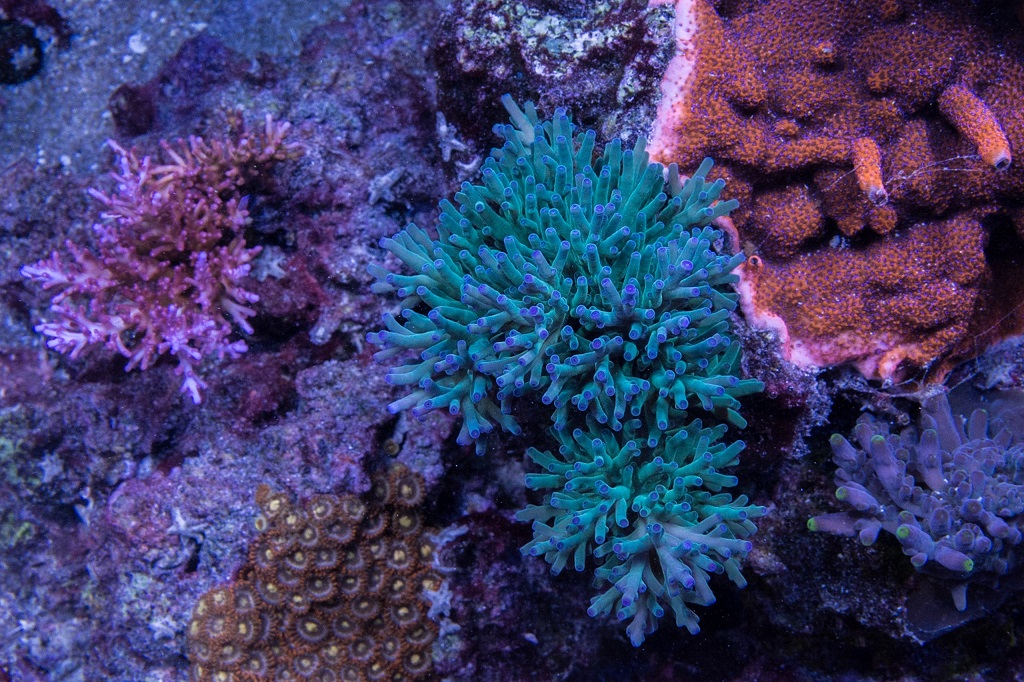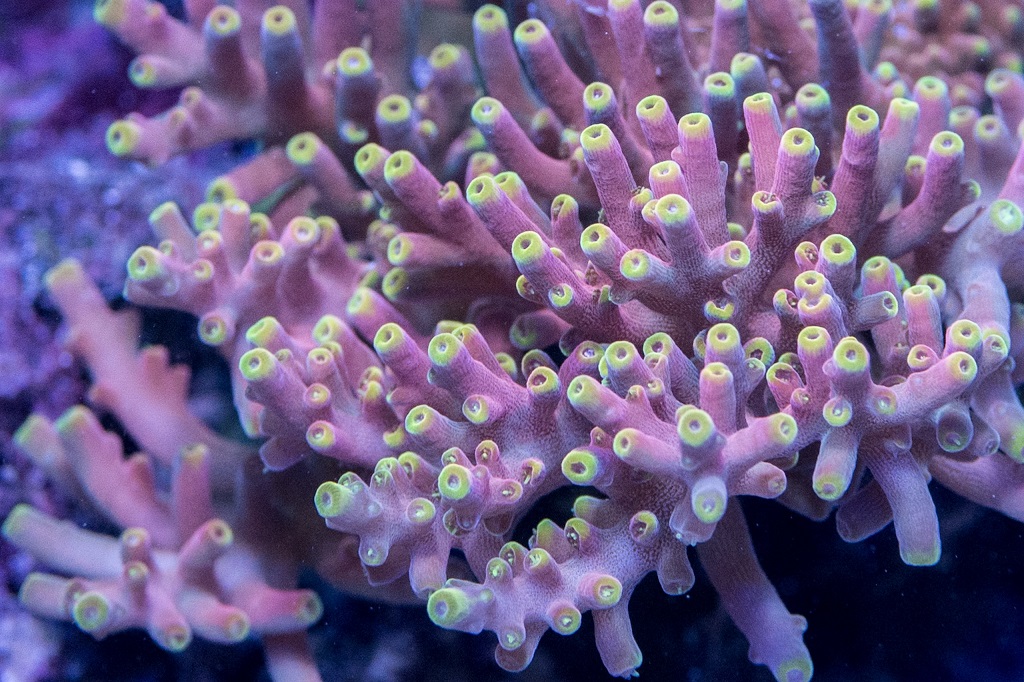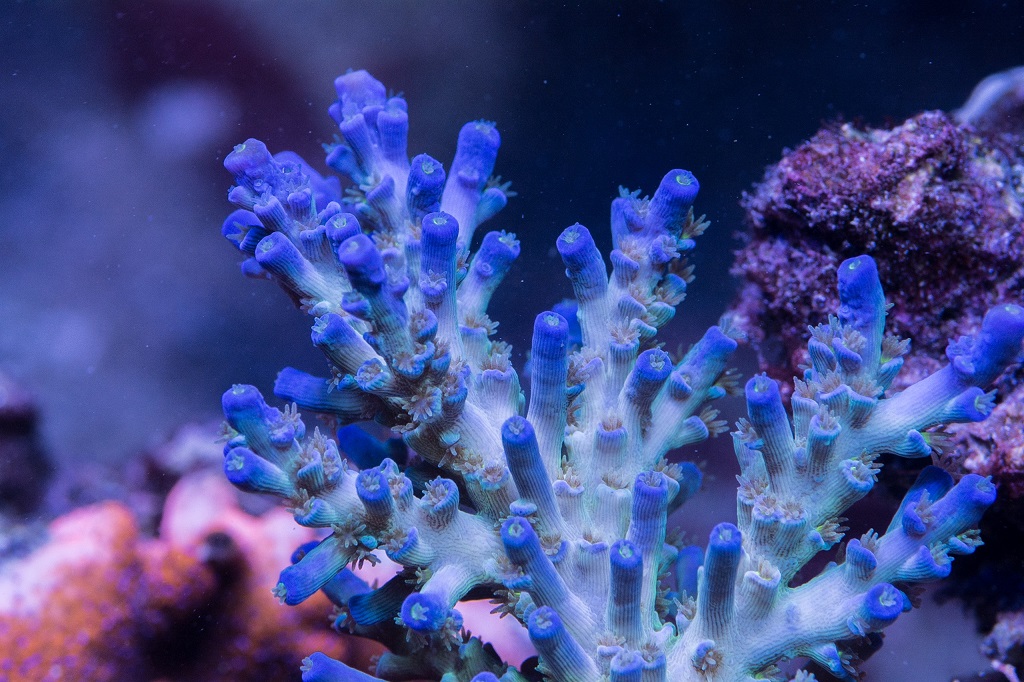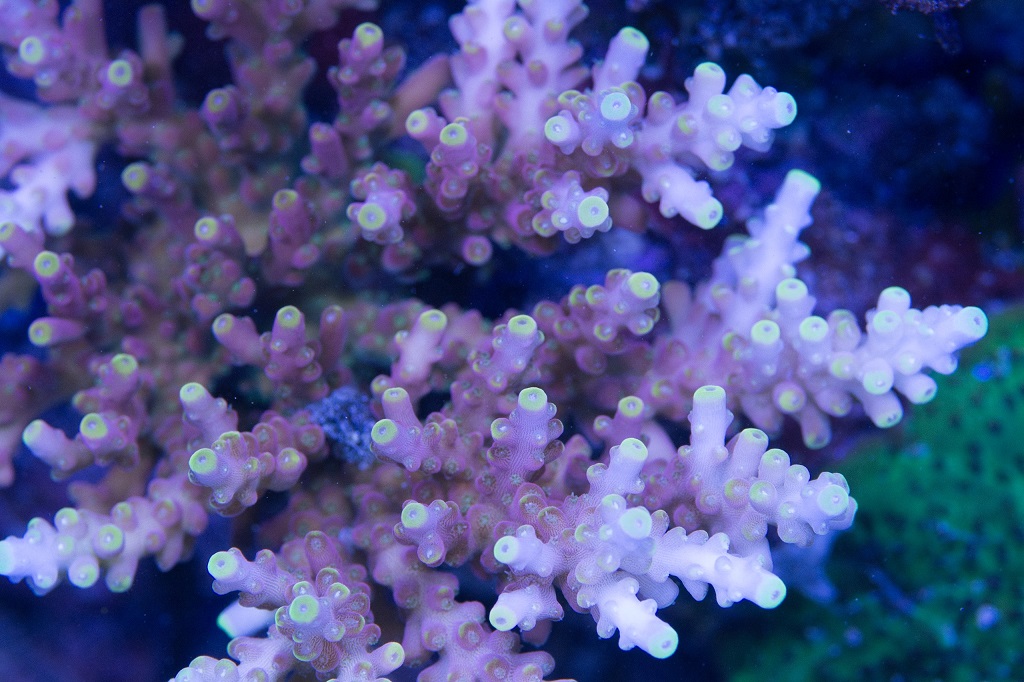I missed that funk on purpose. Oh uh... I need to stay here and continue to catch fish. Why don't you guys take the sump to the new house?[emoji41]I can attest to the 2-3" of detrius...I helped move the tank...the sump was funkybut man, that tank is proof that "funky" works!
Navigation
Install the app
How to install the app on iOS
Follow along with the video below to see how to install our site as a web app on your home screen.
Note: This feature may not be available in some browsers.
More options
You are using an out of date browser. It may not display this or other websites correctly.
You should upgrade or use an alternative browser.
You should upgrade or use an alternative browser.
No water change sps tank?
- Thread starter nashorn
- Start date
- Tagged users None
I think he meant why did you not continue to use a CaRX to dose your foundation elements and went Full Triton instead.Why would I use a Ca reactor if I am dosing? Other than filling up a container once a month I don't do anything when dosing. I used a Ca Reactor for 15 years on my various SPS tanks. I had great success with it. But I don't think it is needed when you are dosing. One or the other my friend.
I test phosphate maybe once every 3 or 4 months. I moved away from caring about too much about phosphates, they are not nearly as important as we have been led to believe. I noticed no difference in my tank when I have 0.01 ppm of P or as high as 0.5 ppm of P. Last time I tested back in July I as at 0.43 ppm. I test Nitrates maybe once a month, they are at 5-10 ppm, but I dose KNO3 to keep then at that level.
If I remember right, you had slow STN on most of your acros around your 4-5th year and couldn't figure it out. Went full Triton and it stopped so you do that now. On reflection, I thought you had a good theory about which elements may have caused the issue prior but I can't remember off the top of my head.
Listen there are lots of different ways to run a tank. I had run my SPS tanks with a Calcium reactor and weekly water changes for years. Then I started dosing KNO3 to keep nitrates up and then a year or so later removed my ca reactor and started dosing Triton. I realized that when I was doing a water change I was adding nitrates into my fresh salt water to keep the levels consistent with the my tank. I then started to question what I was getting with water changes. Trace elements are being added by the Triton dosing and I want Nitrates for the coloration so for me what is the point of water changes. So I stopped.
It's not a badge on honor, if for some reason the tank goes out of balance I will do some water changes.
It's not a badge on honor, if for some reason the tank goes out of balance I will do some water changes.
Here is a legit question: Why?
What does Triton, or whatever, do for you that changing water did not? I assume that this is not money driven since salt is surely cheaper than full-blown Triton. I also assume that Triton takes work, so it cannot be a time thing. Are folks just wanting to tinker and try something new? I am genuinely curious.
Salt is about the same as the dosing solutions, so it's pretty much a wash. I would go through a bucket of salt a month. The amount of work dosing takes is filling up the dosing containers once a month, I'm not sure what other work would be needed. I've written extensively on other boards about my tank and the reason for moving to Triton. I'm about as transparent when it comes to how and why I do my tank the way it is as anyone I know. As far as time, not doing a water change every week give me back about 45 minutes of my Saturday morning that used to be spent doing water changes. So for me it is a lot less work.
How much money, time, effort, and/or stability do you "No water change" guys save/achieve?
I do large frequent water changes on my system and dose very little, just Kalk and some vinegar. However I would like to know what did you guys start to observe as far as any changes to your system?
I find the tank much more stable without doing water changes, every week when doing a water change I would have to adjust the alk, Ca, Mag and nitrates to match my tank and then test to make sure they did not change. I don't have to do any of that anymore. As I wrote I get back about 45 minutes form not doing water changes. All my dosing is automated so other than check solution levels once every month or so and add more there is really nothing to do other than clean the glass.
I'm not sure if I would say the tank is much more successful than how I had been doing it with weekly water changes, a Ca Reactor, GFO, Carbon dosing and testing my tanks in the past were very colorful growth was about the same. It's just much easier now all I am doing is dosing a few things on automatic dosing and cleaning filter socks once in a while.
I think he meant why did you not continue to use a CaRX to dose your foundation elements and went Full Triton instead.
If I remember right, you had slow STN on most of your acros around your 4-5th year and couldn't figure it out. Went full Triton and it stopped so you do that now. On reflection, I thought you had a good theory about which elements may have caused the issue prior but I can't remember off the top of my head.
Yes, that is pretty much what was happening and I went to Triton dosing because of the theory that my tank was somehow using up trace elements faster than the normal, The tank would bounce back very quickly after a series of water changes and then I would have problems with STN again, after some experimentation with trace element dosing that yielded good results, then more problems when I stopped the trace element supplementation, I decided to yank the ca reactor and just dose Triton mainly for the extra trace elements I would get for it. My problems went away so I just stayed with it and here we are. I also dose a home made solution of Zinc, Manganese and Iodine that I think works to keep my acropora healthy.
Very nice! You always have one of the best SPS tanks!
Randy Holmes-Farley
Reef Chemist
View Badges
Staff member
Super Moderator
Excellence Award
Expert Contributor
Article Contributor
R2R Research
My Tank Thread
- Joined
- Sep 5, 2014
- Messages
- 67,509
- Reaction score
- 63,925
Feldman's results showed that skimmers remove no dissolved organic compounds.
Activated carbon is very effective. Purigen I'm assuming is also.
Bacteria as well.
An accurate DOC hobbie test kit would be an extremely benifcial asset.
What result showed skimmers did not remove any DOC?
Randy Holmes-Farley
Reef Chemist
View Badges
Staff member
Super Moderator
Excellence Award
Expert Contributor
Article Contributor
R2R Research
My Tank Thread
- Joined
- Sep 5, 2014
- Messages
- 67,509
- Reaction score
- 63,925
No, that was 30% of TOC.
The analysis of skimate showed that it was almost totally Particulate Organic Matter.
IMO, that is not a correct conclusion to then say no DOC is removed.
Skimmers bring organics into contact and convert DOC into POC. So one cannot conclude that DOC is not removed, and, in fact, it is. Even Ken showed it when he showed that skimmers can almost totally remove dissolved proteins.
http://www.advancedaquarist.com/2010/1/aafeature
"Only about 20 - 30% of the measurable TOC in reef tank water was removed by skimming, whereas almost all of the BSA was removed from saltwater by skimming."
Randy Holmes-Farley
Reef Chemist
View Badges
Staff member
Super Moderator
Excellence Award
Expert Contributor
Article Contributor
R2R Research
My Tank Thread
- Joined
- Sep 5, 2014
- Messages
- 67,509
- Reaction score
- 63,925
Thats 10% of the liquid skimate, not the percentage of DOC removed from the aquarium water.
And i said "almost no DOC."
The amount of DOC removed from the aquarium water is inconsequential.
Can you twist it anyother way?
How can you conclude it is inconsequential? In what context?
We don't how much of any particular organic compound is skimmed out, nor even know what specific organics are well removed and which are not (aside from speculating about the properties of specific organics).
Randy Holmes-Farley
Reef Chemist
View Badges
Staff member
Super Moderator
Excellence Award
Expert Contributor
Article Contributor
R2R Research
My Tank Thread
- Joined
- Sep 5, 2014
- Messages
- 67,509
- Reaction score
- 63,925
Folks who say they do no water changes are certainly correct that they may do no "water changes", but that does not mean that they change no water. 
If you are using any two or three part dosing scheme, you are necessarily changing water, and the higher the daily demand, the more you are changing.
If you dose the equivalent of about 3 dKH per day, you are effectively turning over about 0.3% of the water each day (totaling about 100% in a year).
If you are using any two or three part dosing scheme, you are necessarily changing water, and the higher the daily demand, the more you are changing.
If you dose the equivalent of about 3 dKH per day, you are effectively turning over about 0.3% of the water each day (totaling about 100% in a year).
Last edited:
This is why Randy is and will remain THE MAN!Folk who say they do no water changes are certainly correct that they may do no "water changes", but that does not mean that they change no water.
If you are using any two or three part dosing scheme, you are necessarily changing water, and the higher the daily demand, the more you are changing.
If you dose the equivalent of about 3 dKH per day, you are effectively turning over about 0.3% of the water each day (totaling about 100% in a year).
Folk who say they do no water changes are certainly correct that they may do no "water changes", but that does not mean that they change no water.
If you are using any two or three part dosing scheme, you are necessarily changing water, and the higher the daily demand, the more you are changing.
If you dose the equivalent of about 3 dKH per day, you are effectively turning over about 0.3% of the water each day (totaling about 100% in a year).
And also to be clear, I siphon out the detritus from my sump every 8-10 months, to do that I mix up some saltwater and top off as much as is needed from the water that is removed when siphoning. So water is definitely being exchanged, I am just not doing those 10% weekly or monthly water changes. I'm not trying to keep as much of the same water in my tank, just not putting water changes on my maintenance schedule.
- Joined
- Sep 2, 2016
- Messages
- 344
- Reaction score
- 199
I've read through the thread and just want to add my tank up here for any nano tanks that might think of doing "no water changes". I've been practicing this method for about 8 months. I'm not good at just looking at corals and adjusting which caused me to almost lose everything about 3 months ago, tested and adjusted dosing. did 3 wc's to get sg back to in line. I use the balling method and add amino acids.

View attachment 20170705_222548.jpg
View attachment 20170705_222548.jpg
Randy Holmes-Farley
Reef Chemist
View Badges
Staff member
Super Moderator
Excellence Award
Expert Contributor
Article Contributor
R2R Research
My Tank Thread
- Joined
- Sep 5, 2014
- Messages
- 67,509
- Reaction score
- 63,925
I know it's drifting well off topic, but for those who want to think deeper about DOC and POC and skimmers, this book chapter discusses the process I am talking about, where DOC adsorbs onto an air/water interface and gloms together (as in a skimmer) to form POC:
See Chapter 12
The Early Diagenesis of Organic Matter: Reaction at the Air-Sea Interface
subsection 3
Transformation of dissolved to particulate carbon in surface microlayers
https://books.google.com/books?id=m...er: Reaction at the Air-Sea Interface&f=false
See Chapter 12
The Early Diagenesis of Organic Matter: Reaction at the Air-Sea Interface
subsection 3
Transformation of dissolved to particulate carbon in surface microlayers
https://books.google.com/books?id=m...er: Reaction at the Air-Sea Interface&f=false
Salt is about the same as the dosing solutions, so it's pretty much a wash. I would go through a bucket of salt a month. The amount of work dosing takes is filling up the dosing containers once a month, I'm not sure what other work would be needed. I've written extensively on other boards about my tank and the reason for moving to Triton. I'm about as transparent when it comes to how and why I do my tank the way it is as anyone I know. As far as time, not doing a water change every week give me back about 45 minutes of my Saturday morning that used to be spent doing water changes. So for me it is a lot less work.
Thank you. I think that I understand where you are. Most of the no-water-change "success" that I have seen over the years are mostly trimmed down tanks that relied on the goodwill that they established when they took better care of things (phosphate-free sand and rock that could soak for a while). Most had basic corals and easy-to-keep stuff that would do well under almost any circumstance. Most went downhill a few years later. There were maybe one or two that were pretty good, but I like to bet on the rule, not the exception. Your tank is different than the normal no-change tanks that I have seen, IMO, so thank you for your time.
How can you conclude it is inconsequential? In what context?
We don't how much of any particular organic compound is skimmed out, nor even know what specific organics are well removed and which are not (aside from speculating about the properties of specific organics).
Hi Randy; I was very interested in Feldmans articles. I respect him as I do you & hope I haven't misrepresented his finding.
The following is what I took from his research.
Feature Article: The Development of a Method for the Quantitative Evaluation of Protein Skimmer Performance
By Ken S. Feldman, Kelly M. Maers, Lauren F. Vernese, Elizabeth A. Huber, Matthew R. Test
Department of Chemistry, The Pennsylvania State University
Extract from Conclusions
Quote - All four skimmers were quite similar in the second performance figure-of-merit, the total amount of organics removed. The skimmers typically removed greater than 80% of the BSA. In contrast, perhaps one of the more interesting observations to emerge from these studies is the fact that all four skimmers tested removed only 20 - 30% of the total organics present in authentic reef tank water.
============================================================================
Feature Article: Further Studies on Protein Skimmer Performance
By Ken S. Feldman, Kelly M. Maers
Department of Chemistry, The Pennsylvania State University,
Extract from the Conclusions
A perhaps more interesting observation to emerge from these skimmer studies involves not the rate of TOC removal, but rather the amount of TOC removed.
None of the skimmers tested removed more than 35% of the extant TOC, leading to the conclusion that bubbles are really not a very effective medium for organic nutrient removal.
============================================================================
Feature Article: Bacterial Counts in Reef Aquarium Water: Baseline Values and Modulation by Carbon Dosing, Protein Skimming, and Granular Activated Carbon Filtration
By Ken S. Feldman, Allison A. Place, Sanjay Joshi, Gary White
Department of Chemistry, The Pennsylvania State University,
Our earlier research on the topic of carbon nutrient levels in marine aquaria (Feldman, 2008; Feldman, 2009; Feldman, 2010) has provided experimental documentation for four conclusions that impact on TOC management in our reef tanks:
1. Reef aquaria utilizing active filtration (GAC, skimming) maintain equilibrium TOC levels within the range found on healthy tropical reefs.
2. Protein skimming (i.e., bubbles) is not very effective at removing TOC from aquarium water, depleting typical reef tank water of only ~ 20 - 35% of the post-feeding TOC present.
3. Granulated Activated Carbon filtration is quite effective at stripping reef tank water of its TOC load, removing 60 - 85% of the TOC present.
4. And, quite intriguingly, the natural biological filtration, which starts with bacteria and other microbes, is remarkable in its capacity to remediate reef tank water of TOC, easily removing 50% or more of the post-feeding TOC increase in tank water.
============================================================================
Feature Article: Elemental Analysis of Skimmate: What Does a Protein Skimmer Actually Remove from Aquarium Water?
By Ken S. Feldman:
Department of Chemistry, The Pennsylvania State University
Elemental Analysis Summary
An interesting and perhaps unanticipated observation is that only 34% of this solid skimmate material can be assigned to "organic carbon", TOC. Thus, 2/3 of the solid, water-insoluble part of the skimmate is not TOC, but rather inorganic material that may (or may not) have biogenic origins.
Skimmate Liquid Analysis
The bottom line, however, is that the skimmate liquid contains mostly the common inorganic ions that constitute the major ions in seawater. Only a small amount of this material can be arguably assigned to dissolved organic carbon, DOC.
Further;
One of the surprising observations to emerge from the original skimmer performance studies is that only approximately 20 - 35% of the measurable TOC in aquarium water is removed by skimming. That observation might now seem a little less surprising when viewed in the context of the skimmate component analysis. Thus, only ~ 29 % (25% from the solid + 4% from the liquid) of the skimmate removed by the H&S 200 skimmer from authentic reef tank water over the course of a week can be assigned to organic material. So, skimming does not remove all that much of the TOC present in aquarium water, and the skimmate does not contain all that much TOC.
Conclusions
The chemical/elemental composition of skimmate generated by an H&S 200-1260 skimmer on a 175-gallon reef tank over the course of several days or a week had some surprises. Only a minor amount of the skimmate (solid + liquid) could be attributed to organic carbon (TOC); about 29%, and most of that material was not water soluble, i.e., was not dissolved organic carbon. The majority of the recovered skimmate solid, apart from the commons ions of seawater, was CaCO3, MgCO3, and SiO2 - inorganic compounds! The origin of these species is not known with certainity, but a good case can be made that the SiO2 stems from the shells of diatoms. The CaCO3 might be derived from other planktonic microbes bearing calcium carbonate shells, or might come from calcium reactor effluent. To the extent that the solid skimmate consists of microflora, then some proportion of the insoluble organic material removed by skimming would then simply be the organic components (the "guts") of these microflora. These microflora do concentrate P, N, and C nutrients from the water column, and so their removal via skimming does constitute a means of nutrient export.
==============================================================
Now, the above is the results from Feldmans indepth anaylsis, not mine!
I do not carbon dose and I do not use GFO. Tank has been up for about 9 years. switched to Triton dosing In January 2016. But I only changed dosing for my Calcium reactor, everything else I had been doing I just continued, except for water changes, they make no sense now. I have been doing Nitrates for 3-4 years, and water changes started to be counter productive. The only pint in doing water changes is to reduce nitrates and add trace elements. I am getting the trace elements from dosing and I need the nitrates for coloration. Anyway, here are my test results.
Do you do full Triton or do you modify ? No filter socks, 10 x turn over through your sump, variety of Macro Algae, and dose only with Triton
I ask because I am looking at going to the Triton Method but may have to modify. What do you think?
No filter socks -- Easy for me to remove
variety of Macro Algae -- I may be ok I have a refugium that is a 20 gallon long tank full of Chaeto, there is a power head in refugium but Chaeto does not turn over because it is to full. I removed other macro algae, there may be a little of them still in the Chaeto, several months back but i can replace.
10 x turn over through the sump -- with my current set up if I go past 6x turn over and my return is turned off / power goes out my sump and refugium will overflow.
dose only with Triton -- I dose two part Randy's Recipe with BRS dosers should be able to switch over to Triton.
My "fresh from oven" FTS. No WC, no skimmer, no GFO, no refugium. Very simple filtration, fully bacteria driven.

How? What is routine or what do you do? I have a basic system, but I must do something wrong.
Similar threads
- Replies
- 93
- Views
- 2,697




















